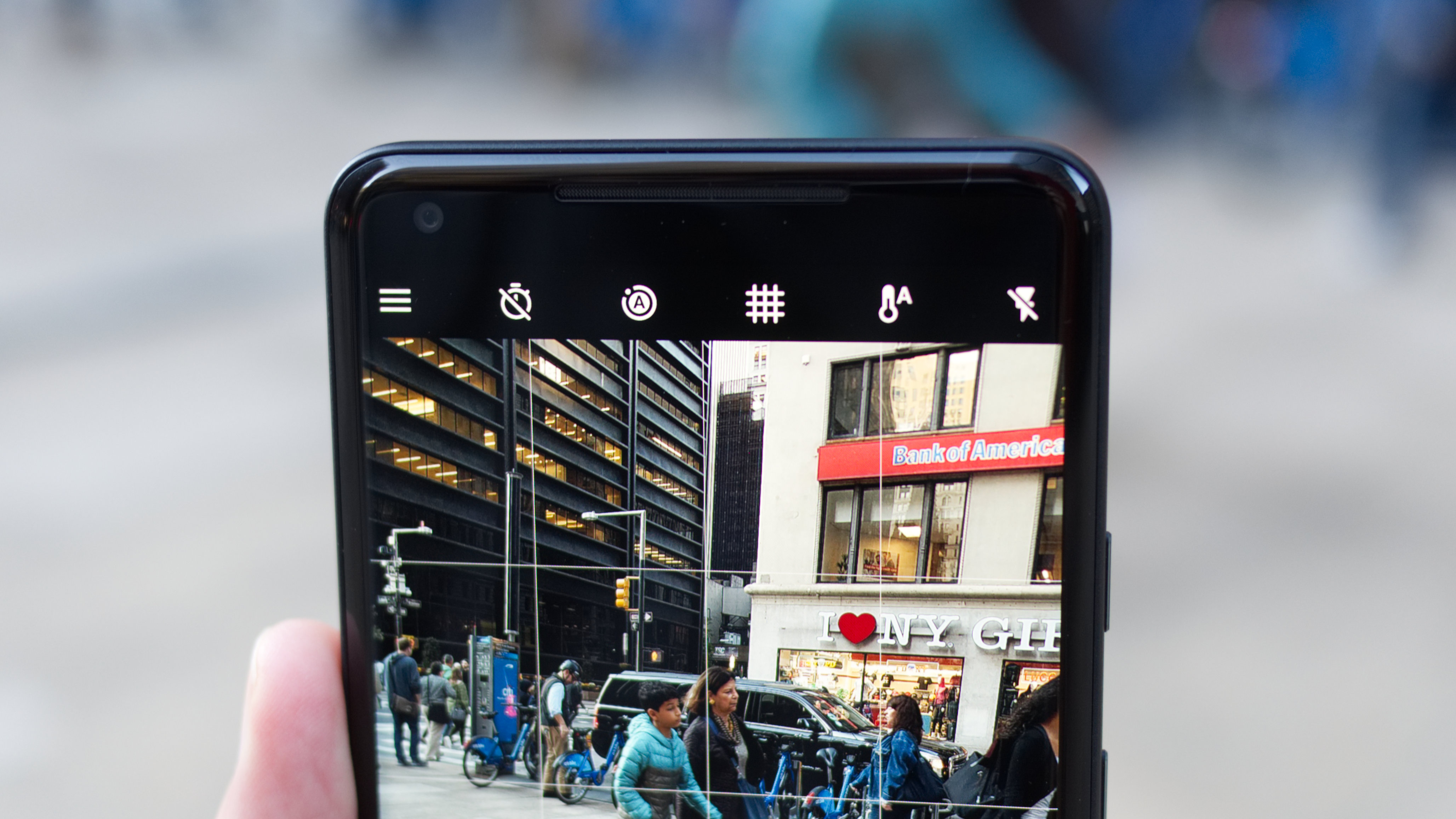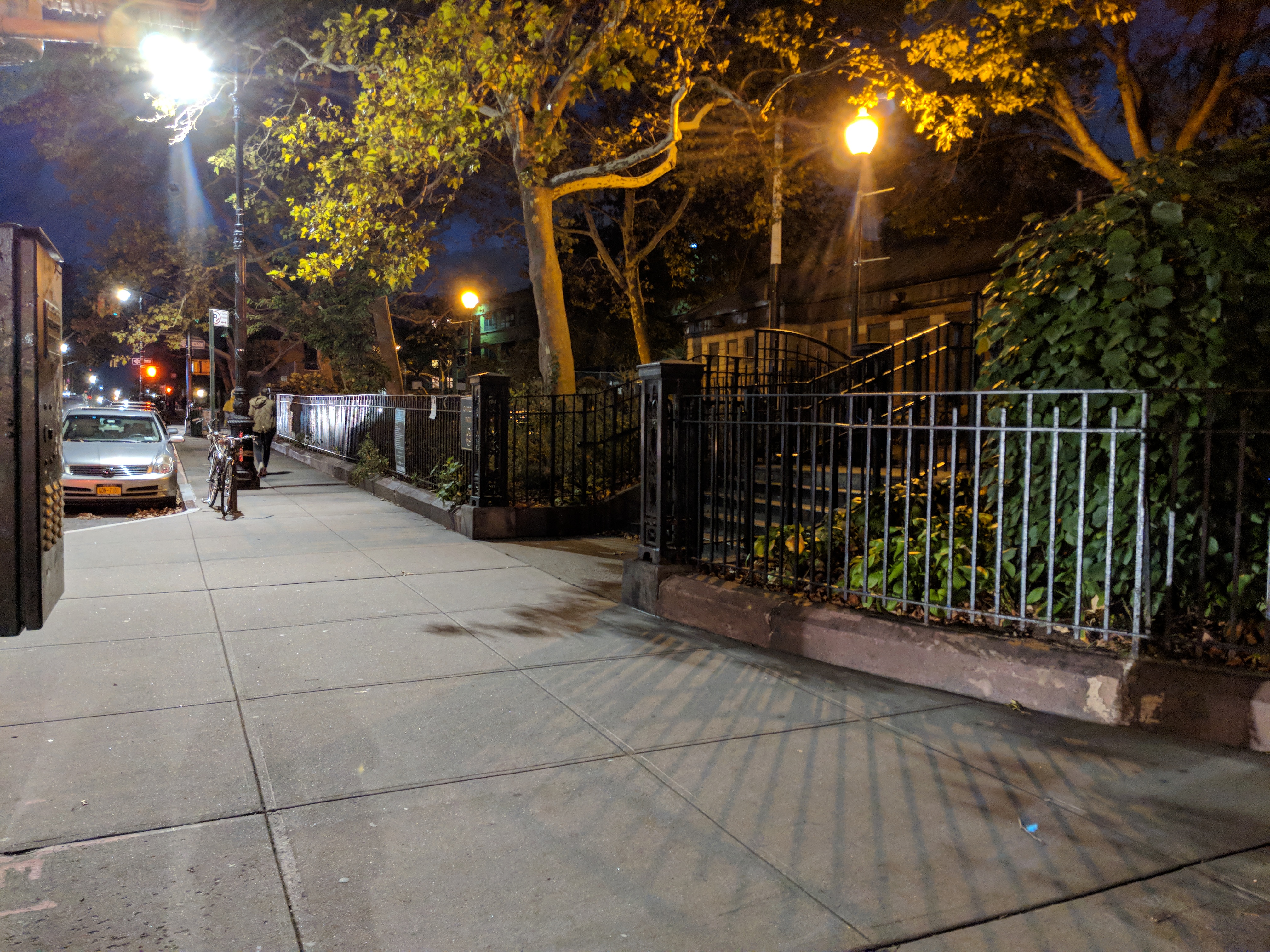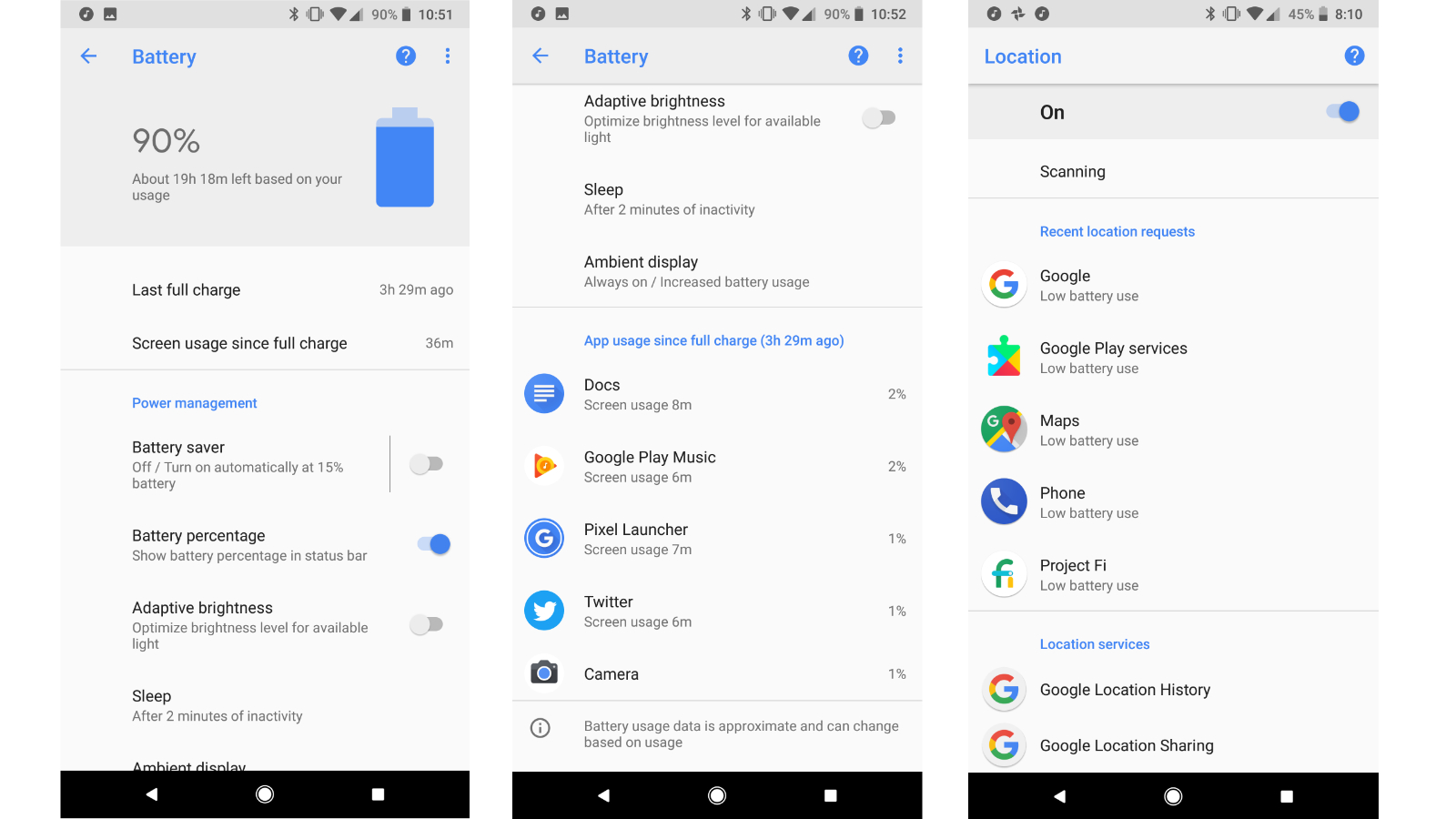Why you can trust TechRadar
Camera
- Easily this phone's marquee feature
- A single front and rear lens do more than what many other phones can with two
- Portrait mode and Google Lens are party tricks that you’ll actually keep using
How good can one expect a single-lens smartphone in 2017 to be? Considering that many dual-lens options like the iPhone 8 Plus, OnePlus 5 and Samsung Galaxy Note 8 have impressed with their depth-of-field prowess, why would a major player even fathom rolling with just one when the perks of building in two are so evident?
These are questions that Google’s optics team likely asked itself in development, but having built a tremendous foundation with the original Pixel devices, it basically laughed in the face of the two-lens trend yet again. And surprisingly, yet not-so-surprisingly, the results are magical.
Watch our camera review of the the Pixel 2 XL below.
The 12.2MP camera lens on the back sports an f/1.8 aperture, improving over last year’s model to help bring a little more light into a dark scene. Flipped over to the front, we have what looks to be the same 8MP selfie cam that is set to f/2.4.






If you’re looking for huge spec bumps in the camera department, you won’t find them. However, that doesn’t mean that things have stayed the same.
In our time reviewing, the pictures have turned out even better than before, thanks to the Pixel 2 XL’s widened aperture, faster autofocus and the new Portrait mode, the latter of which works wonders on both the rear and front cameras.
Photos taken with the camera quick-draw style are more likely to come out exactly the way you had hoped on the first attempt. The colors are accurate, not deeply saturated. Lighting and focus are right on the mark.
Sign up for breaking news, reviews, opinion, top tech deals, and more.
You’ll notice in the photo gallery that Google has introduced a new feature called Motion, a play on Apple’s Live Photos that records a second of footage surrounding each photo. Frankly, this doesn’t do much for us, but if you snap photos left and right, it does help to provide some visual context for each one.
Moving onto the main event, or part of it, when you want to focus in on a moment to bring out a dramatic look and feel, Portrait mode lets you do that with both the front and rear cameras. Frankly, there’s no reason that these photos should look as good as they do.
To really show off the effect, each Portrait photo snaps a regular still and one rich with bokeh that clearly expresses the differences.
We found that the bokeh filter is a little hit and miss in selecting what to pronounce and what to delegate a blur to, but on the whole, it’s accurate in a variety of light settings. Here's a gallery of photos shot with Portrait mode.
Capturing video on the Pixel 2 XL is just fine and dandy, too, but if sheer quality is what you’re after, the iPhone X will likely be the best choice with its 4K recording at a smooth 60 frames per second.
Recording at up to 4K at 30 frames per second, the results here are still worth checking out. As we experienced when taking photos, videos are also super quick to focus, balanced in their color and lighting expression.
We haven't noticed the speaker distortion problems that plague some Pixel 2 phones, but we have reported on other users who have experienced bad sound quality from recording 4K video. Google says it'll issue a software update in the coming weeks for this flaw.
The other big chunk of the main event is Google Lens, the company’s initiative to make the camera smarter than ever. It’s still in early days and we were only able to test out how well it can recognize objects after the photo was taken, not before, as we’ve seen shown off at Google IO 2017.
More robust functionality will launch in the days following the Pixel 2 and Pixel 2 XL’s launch, but even the early look shows a lot of promise for the smart image recognition.
Lastly, to make sure you get to reminisce on your glorious photos for a while, Google is offering Pixel 2 owners unlimited cloud storage for full-resolution photos and videos.
The caveat here is that it will expire in early 2021. Even so, it’s possible that Google will parlay the offer into a selling point when future devices debut, like the Google Pixel 3. We’ll have to wait and see the fine print, but you may never actually have to pay anything at all for uncapped cloud storage.
Battery life
- 3,520mAh battery is a small, but welcome increase over last year’s model
- All-day battery is all but guaranteed, as is reflected by our experience
The battery inside of the Google Pixel 2 XL certainly isn’t industry-leading in terms of capacity. At 3,520mAh, it gets outclassed by some midrange phones, like the Asus ZenFone 3 Zoom, which houses a 5,000mAh battery. But still, what it carries inside is still larger than what the Samsung Galaxy Note 8 offers.
During our time with Google’s new phablet, it can easily last over a full day of light to medium use.
On the weekend, we typically don’t use the phone a whole lot and were able to squeeze close to a day and a half out of its battery before needing to recharge for a trip outdoors where we needed to utilize Google Maps. That said, leaving it through the night with the always-on display (AOD) activated, it only drained about 7%.
Even if you’re someone who really puts their tech to task, you’ll definitely still achieve a full day of use. Android Oreo has some new smarts built-in to help manage the background use of apps with the goal being to achieve more efficiency and less data use.
This resulted in some better-than-expected drains on the power pack, but at the same time it's such a 'background' feature that it's hard to tell how much of an effect it's having on battery life.
There's no overt system updates telling you that certain apps have been put to sleep - like one might get with Samsung's Note 8, for instance - but that's possibly not necessary here.
One of the battery-draining features we did notice is that the ability to double-tap the screen to wake the Pixel 2 XL would activate in the pocket.
This led to some faster discharging than we would like to have seen, so you might want to think about disabling that feature if you go for this phone and want to save battery life.
One thing we would have liked to see here is wireless charging - the top players are now really getting behind the QI standard, and given that Google's Nexus phones were among the first to bring the tech to the market, it's weird it's not present now.
Sure, the shell doesn't really allow it, but many expected Google to find a way around that problem given its close partnership with Qualcomm.

Cameron is a writer at The Verge, focused on reviews, deals coverage, and news. He wrote for magazines and websites such as The Verge, TechRadar, Practical Photoshop, Polygon, Eater and Al Bawaba.





























